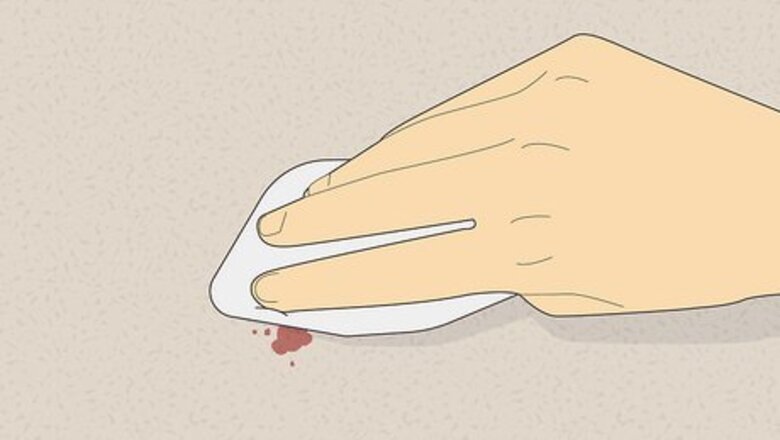
views
Removing Fresh Blood
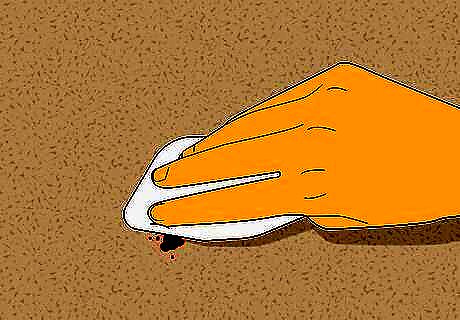
Blot with a clean, white cloth or towel. Press down and lift to pick up as much wet blood as possible. If you are working on a large stain, start on the edges and work your way towards the center. This prevents the blood from spreading. Do not rub the stain. This smears it onto more carpet fibers.

Spray with cold water. Spray the stain with cold water, and let it sit a few minutes. If you don't have a spray bottle, instead pour on just enough water to wet the carpet. Do not use warm or hot water, which can set the blood stain permanently into the carpet. Too much water can spread the stain or damage delicate carpets. Keep it damp, not soaked.
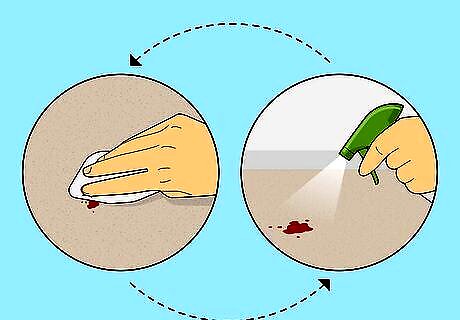
Keep wetting and blotting. Use a dry towel to absorb the moisture, again blotting in an up and down motion. Continue to wet, then blot dry, until the stain is gone. This may take several repetitions. You can also absorb the moisture using a wet vac or a handheld carpet extractor. Change to a new spot on the towel whenever the old one gets discolored. Use white towels to see this more clearly.
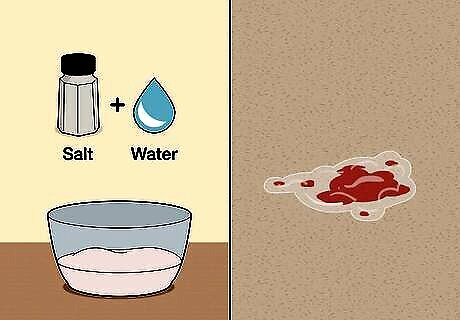
Treat with salt paste. If the stain is still there, try a salt paste instead of plain water. Mix salt in a small bowl of cold water, until you make a thin paste. Pour a little over the stain and let sit for a few minutes. Blot this again with a clean cloth or towel. If you see residue on the towel but the stain is still there, repeat this step. Salt can damage carpet fibers over time. Vacuum promptly once the area is dry.
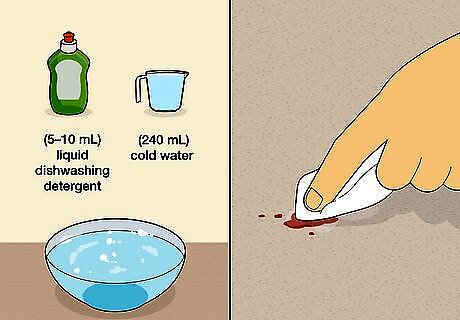
Wet with dilute liquid detergent. Stir 1–2 teaspoons (5–10 mL) liquid dishwashing detergent into 1 cup (240 mL) cold water. Soak a clean, white cloth with the solution and apply it to the stained area. Rinse by spraying on plain water, then blotting dry. Do not use detergent that contains bleach or lanolin.
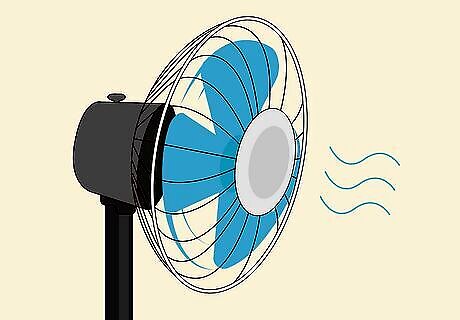
Turn on a fan to speed up drying. Blow a fan over the wet spot to speed up drying. If the carpet takes too long to dry, blood left on the backing of the carpet can "wick" up to the surface fibers, causing a new stain. If you don't have a fan, stack a few paper towels over the wet area. Weigh down with a heavy object and let dry.
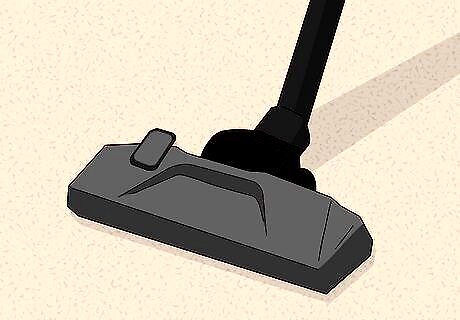
Vacuum or brush the dry carpet. This will restore the original shape of the carpet fibers. If the stain is still visible, try using the methods below for dried stain removal.
Removing Dried Blood
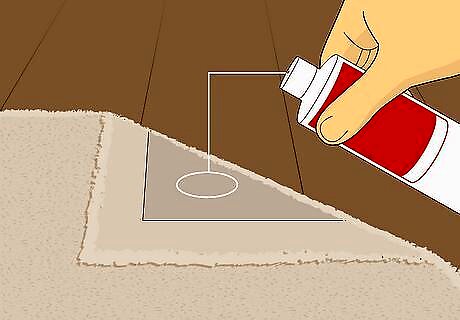
Test each treatment on a hidden area first. The treatments below are potentially strong enough to damage or discolor your carpet. Always test them on a small, hidden spot of your carpet first. Let them sit for at least 15 minutes, or until dry, then check for damage. Silk and wool carpets are notoriously easy to damage, and you may not even want to risk a corner. Consider hiring a professional instead.
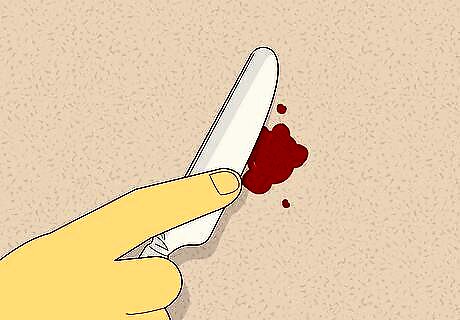
Brush with a dull knife (optional). Scrape a butter knife across the carpet fibers to remove flecks of dried blood. This gives you a head start on heavy spills, but won't do the trick by itself. This is not recommended for valuable carpets.
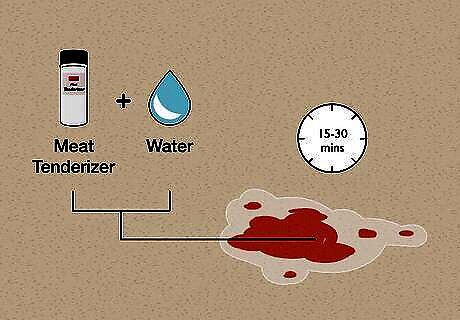
Apply unflavored meat tenderizer. This chemical breaks down proteins in the blood stain, making it easier to remove. Mix this with an equal amount of cold water, then dab onto the stain. Let sit 15–30 minutes, then blot with a clean towel. Rinse off with a drop of liquid detergent mixed into cold water. Avoid flavored meat tenderizer, which can create new stains. This may break down fibers in wool or silk carpets, since these also contain animal protein.
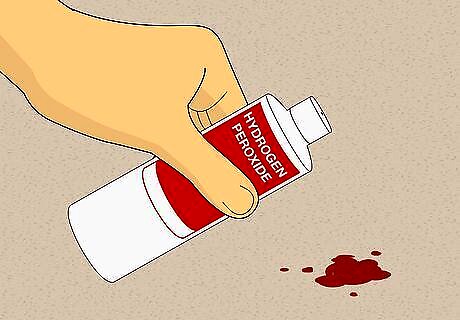
Wet the tufts with hydrogen peroxide. Hydrogen peroxide lightens the color of your carpet fibers, hiding the stain. Wet the stain with 3% hydrogen peroxide. Let dry in a well-lit room, and it will break down with no further need for rinsing. This is a risky method for carpets with dark or vivid colors, but much safer than using bleach. Most drugstores sell 3% hydrogen peroxide. If your bottle is more concentrated, dilute some to 3% strength. (For instance, mix one part 9% hydrogen peroxide with two parts cold water.)
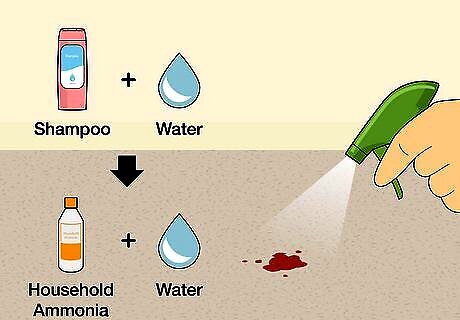
Soak in shampoo, then ammonia. Ammonia is highly effective, but may discolor the carpet and damage wool or silk. While you can use the ammonia treatment by itself, it is most effective following ordinary detergent: Mix 2 teaspoons (10 mL) shampoo or liquid dishwashing detergent in 1 cup (240 mL) water. Spray on carpet and let sit for five minutes. Mix 1 tablespoon (15 mL) household ammonia in 1 cup (240 mL) room temperature water. Take care not to inhale ammonia fumes. Blot shampoo dry, then spray on ammonia. Let sit five minutes, then blot dry again. Spray on water and blot dry, to rinse.
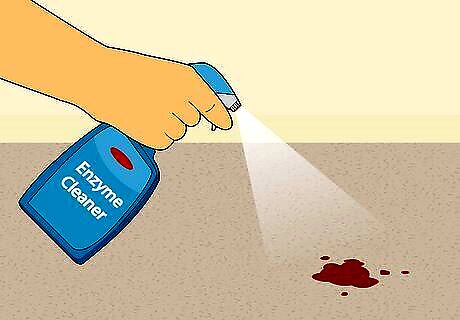
Use an enzyme cleaner. Commercial enzyme cleaners break down the complex chemicals found in blood and other organic stains. Apply according to label instructions, typically by spraying over the stain, letting it sit, then blotting dry. These are often sold as pet urine removers. Some environmentally friendly laundry detergents contain enzyme cleaners, but use these only if you can't find a product designed for carpets. These products may not work as well at cold or very hot temperatures. Do not apply to wool or silk carpets, since the cleaner may break them down along with the blood. Only use an enzyme cleaner if you're confident about where the stain came from. Otherwise, think about hiring a professional company to clean your carpet.

Dry the carpet in an area with good air flow. Once the stain is removed, set up an electric fan blowing over the wet area, or open the windows and doors to create a breeze. This speeds up drying, which reduces the chance of hidden blood in the backing rising to the surface.
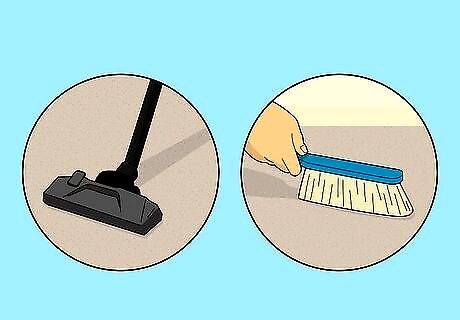
Vacuum or brush the carpet. Your carpet fiber may feel stiff or crusty once it dries. A quick use of a vacuum or carpet brush should restore it to its original feel.




















Comments
0 comment